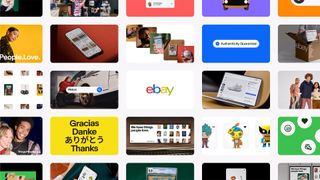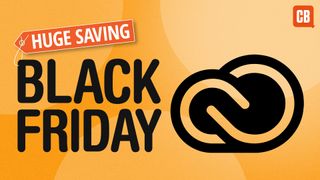6 things to know about getting freelance clients
Discover how to lure clients as a freelancer, and keep them forever.

The web is an endless sea of possibilities. You can choose your own adventure, working at a design agency or as in-house designer. You can start your own blog or learn the art of 3D using online Blender tutorials. Or you can do something more daring – break out on your own.
But being an independent designer means that you also have to be a business person. You can't tune out the nitty gritty of contracts and ledgers. If you do, your business won't take off. It's a necessary evil.
In this post, we'll go through what you need to know about the business of design so that you can thrive as a self-employed designer.
01. Love your clients
Whether you're a self-employed designer or a business owner, you're either going to be passionate about your product or service, or you're going to be passionate about the people you serve.
I believe it's even more important for self-employed designers to love their clients more than their tools, than it is for many other types of business owner. The reason is this: the design world moves so fast, and design trends change so quickly, that it takes passion to keep up. That environment breeds passion for your craft – and rightly so! Remember to channel all that passion and energy back at your clients.

When business is positioned like that, it's far more palatable for the self-employed designer. How can you help more people? How can you leverage your design skills to make more of an impact for your clients? How can you reach more people to make an impact for?
02. Be clear about your services
The first step in getting someone's business is to be clear on what you offer. There's no room for vagueness and uncertainty. One way to ensure you're communicating what you offer is to know what you're best at and what value you bring to the table.
Get the Creative Bloq Newsletter
Daily design news, reviews, how-tos and more, as picked by the editors.
As described in the free Field Guide to Freelance Web Design that I helped write for UXPin, there are a few ways to figure out how to define yourself and your business.
First of all, you need to study your market. Learn about who's playing in your space, and who's satisfying their clients. What sells well? What niches of the market aren't being served as passionately or completely as others?
Next up, try to think like your prospective clients.The more time you spend researching from the eyes of a prospect, the more you'll spot where those prospects could be served better.
You should also look for opportunities in the market. Perhaps there's a certain niche that gets less service because it isn't ‘hip'. Or maybe your competition isn't communicating in a way that your market understands. Maybe you're better at educating prospects. Or maybe you provide significantly more value than they do.

But defining yourself isn't enough. You have to know the difference between what you do, and what the client gets. For example, 'we do persona development' means nothing to most clients, where 'increasing conversion rates by targeting demographics separately' usually makes more sense to them.
Home Depot sells customers 'drills'. The customers want 'a hole in their wall'. Same thing, different terminology.
Some clients will be interested to know what kind of drill you'll be using, and why you think it's the best drill for the job. All clients will be interested to know if you're going to give them the exact hole they want.
03. Make sure you stand out
Everyone that's fighting for a piece of the client pie says they're good. And you're going to have to cut through that noise and stand out.
To make yourself unique, you need to consider: what makes you special, how you pitch that to prospectives, how you sell that, and how you position yourself as an expert.
And when everyone is saying the same thing, it gets trickier.
Back before responsive web design was a thing, I remember selling responsive web design to prospects. It was like magic, and when coupled with the rest of our offer it was the icing on the cake. Now, responsive design isn't a nicety, but a necessity. The work may still be valuable, but if everyone else is also doing it, the magic is lost.
You can get around this by doing the following:

- Add case studies to your site, highlighting how you solved a particular problem.
- Use testimonials from past clients on your site.
- Keep your skills fresh – stay on top of the latest trends and techniques.
- Play to your strengths: think about what you can offer that others don't.
04. Have an onboarding process
Once you attract a prospective client, you need to have a clear onboarding process.
Prospects become clients when they're confident in you, your ability to deliver results and your value proposition. A solid process will really help you instil that confidence.

Similarly, declining clients that you don't believe will allow you to deliver results or your value proposition to is equally important.
Perhaps they want something you have no idea how to do (and it's sufficiently out of your wheelhouse for you to learn in a timely manner). Or perhaps their budget is too small. Maybe the product they're selling doesn't align with you ethically.
In any of these cases, it's your role to shut the deal down, rather than compromising your integrity or ethics by delivering bad work or building bad products.
While we're talking about shutting the deal down, there are a few things to look out for. Make sure...
- They have the funds to commit to working with you, or at least enough to get started.
- They're ready ready to start work on the project soon.
- Your personalities can work well together.
- They respect you, your work, and your rate.
- They have passion for their own project.
While it may be tempting to take any work that comes your way, you don't want to put yourself in a miserable situation. You'll want to make sure that you want to work with someone as much as they want to work with you.
05. Create a good contract
You probably know you'll want good contracts in place before you do business with other companies. For more on creating decent contracts, check out our article on the 10 contract commandments you should know about.

But the best contract in the world may not help you if someone on the other side of the world decides to disappear without paying you.
Have good contracts, have clear payment guidelines, and be wise about who you do business with.
For example, Fairhead Creative uses simple but comprehensive contract documents that outline when we expect each partial payment, ahead of each piece of work starting, so that we can be paid incrementally as work is completed. Whatever payment details work best for your market, get it in writing, just in case.
As depressing as it may sound, I'd recommend brushing up on what the procedures are in your country and state for things like small claims courts and collection agencies. Hopefully you'll never need either, but knowing how to set the process in motion if someone breaks the rules will give you the confidence to tackle problems appropriately, rather than shying away.
06. Keep track of your hours
Do you know how long your previous projects took you? How long did you spend on each part of the process? If you were to take away a specific section of the design work, how would that affect the price?
Without this data, you're screwing yourself and your wallet. The better you track your time, the more accurate your estimates become. Become a master time-tracker.
There's lots of great project management tools available, but they'll only be as effective as the person using them: choose a tool and master it.
Related articles:

Thank you for reading 5 articles this month* Join now for unlimited access
Enjoy your first month for just £1 / $1 / €1
*Read 5 free articles per month without a subscription

Join now for unlimited access
Try first month for just £1 / $1 / €1




